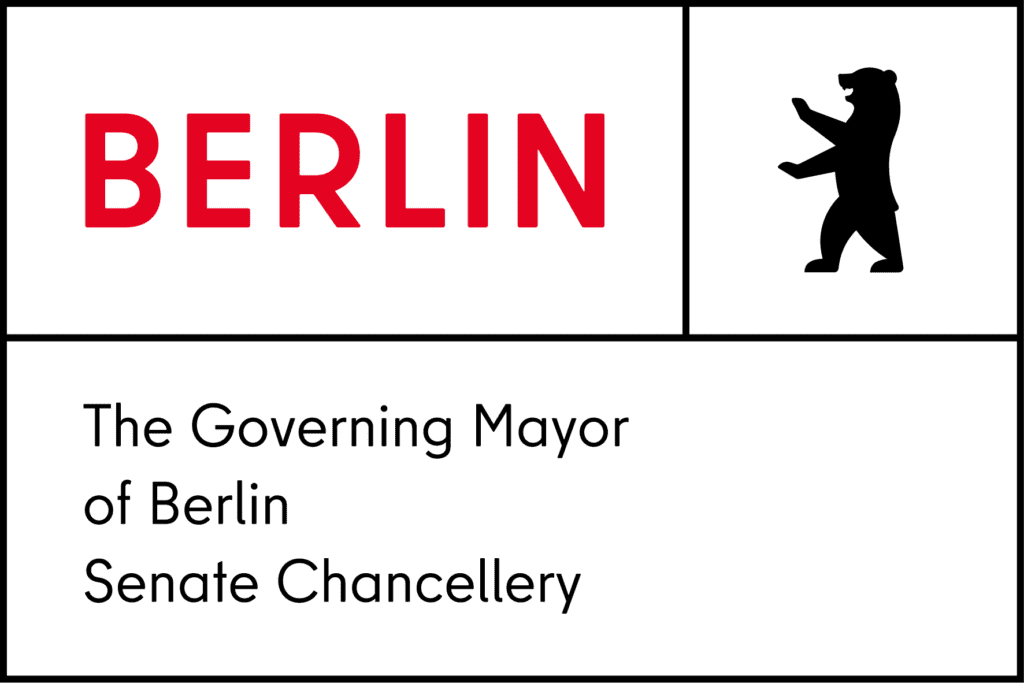The Kiezlabor is on the road again and our first location took us to the heart of Neukölln, more precisely to Gropiusstadt under the motto “Rediscover Gropiusstadt”. But what actually makes a good explorer? It certainly includes curiosity, adaptability, sound knowledge and preparation, powers of observation, respect for the environment and creativity – and that’s exactly what characterises the Kiezlabor!
So the first thing we did, in the style of traditional explorers, was to network with local players and initiatives in order to build our preparations on their existing knowledge. Together, we put together an extensive programme from 23 to 31 May. In this blog post, you can find out how we fared as explorers in Gropiusstadt and what new things we learnt in the area.
A start full of surprises: Our first exploration of Gropiusstadt
When we set up our container for the first time, we quickly realised that we were no longer as experienced as last year. Unpacking the boxes and preparing the Kiezlabor took quite a while. But Gropiusstadt welcomed us with glorious weather and lots of visitors. The first impression: we quickly became a discovery for the people from the neighbourhood ourselves!
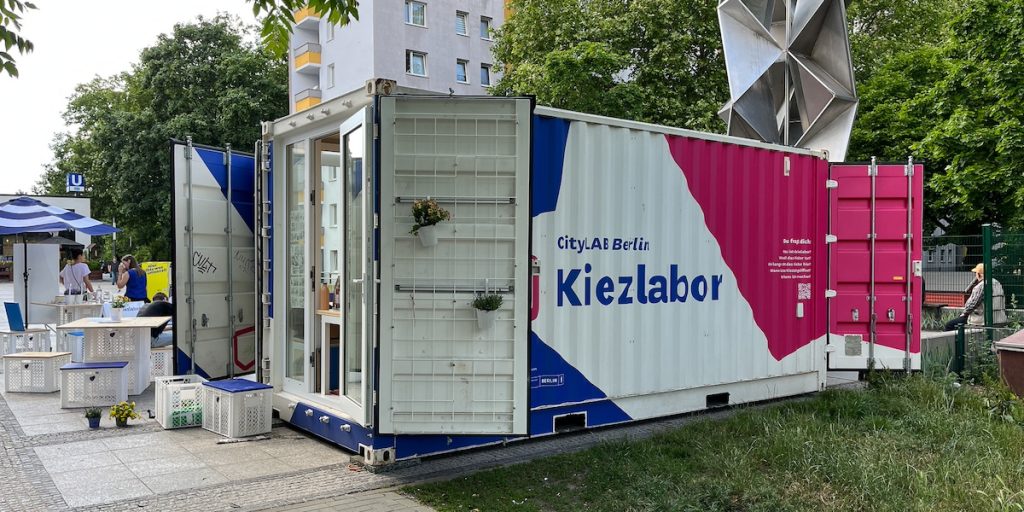
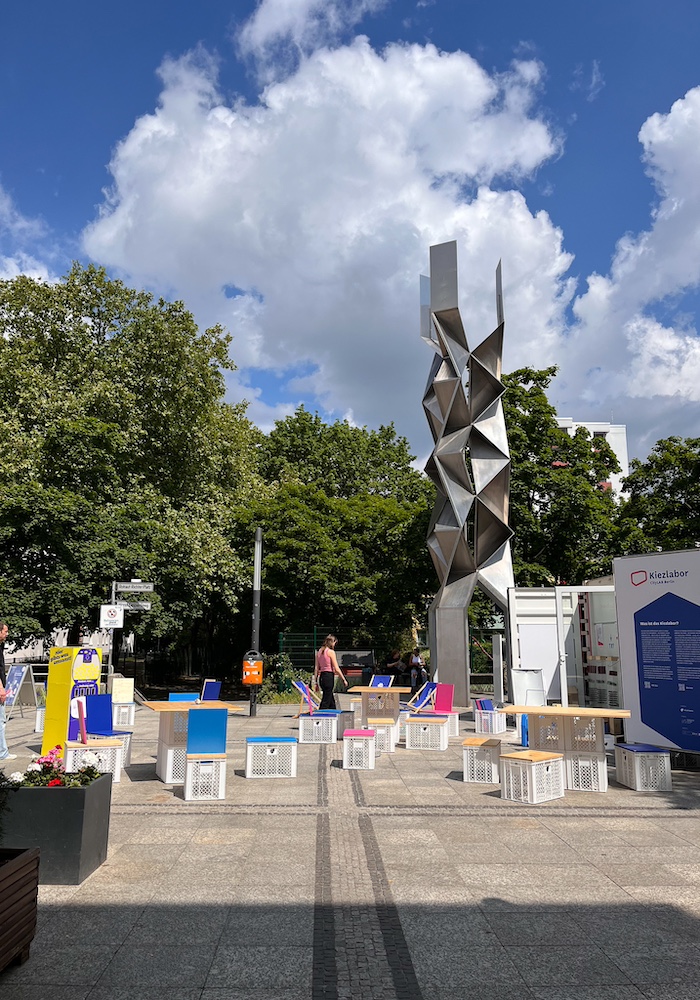
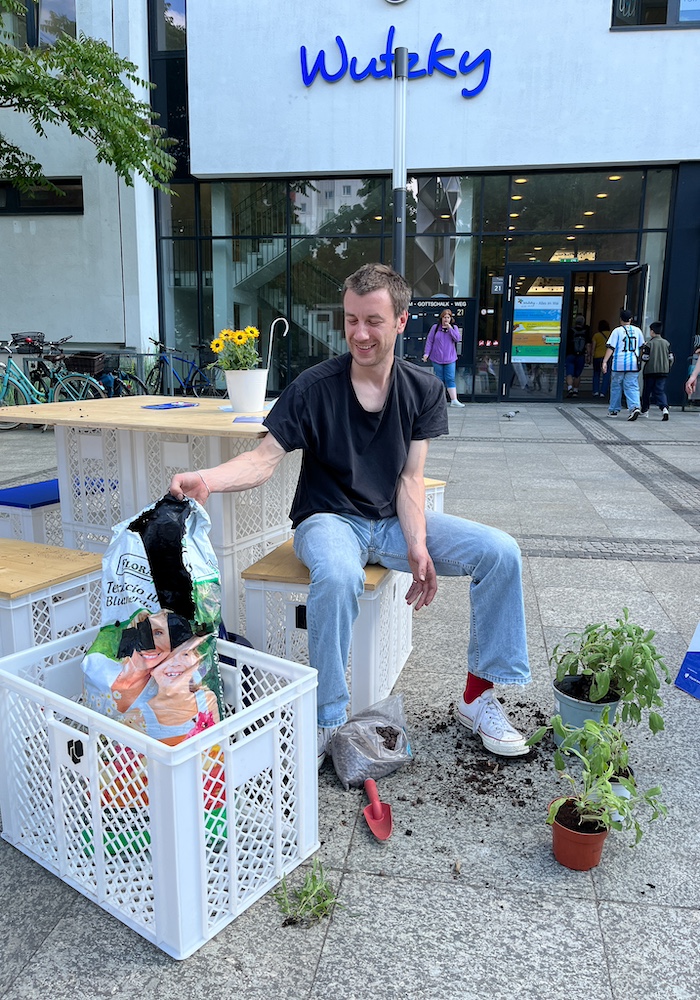
On the second day, we received a special visitor: the district mayor Martin Hikel came to the Kiezlabor in person to talk to the residents! Hikel took plenty of time to answer questions and listen to the ideas of those present. Numerous topics that concern the people of Gropiusstadt were addressed: Rents, accessibility, healthcare and cleanliness, to name just a few.
In the relaxed atmosphere of the Kiezlabor, it became clear how constructive such a personal exchange can be in order to identify the needs of the neighbourhood or, to stay true to our motto: to discover! The direct contact made it possible for residents to communicate their concerns and worries directly and to look for solutions together with politicians.
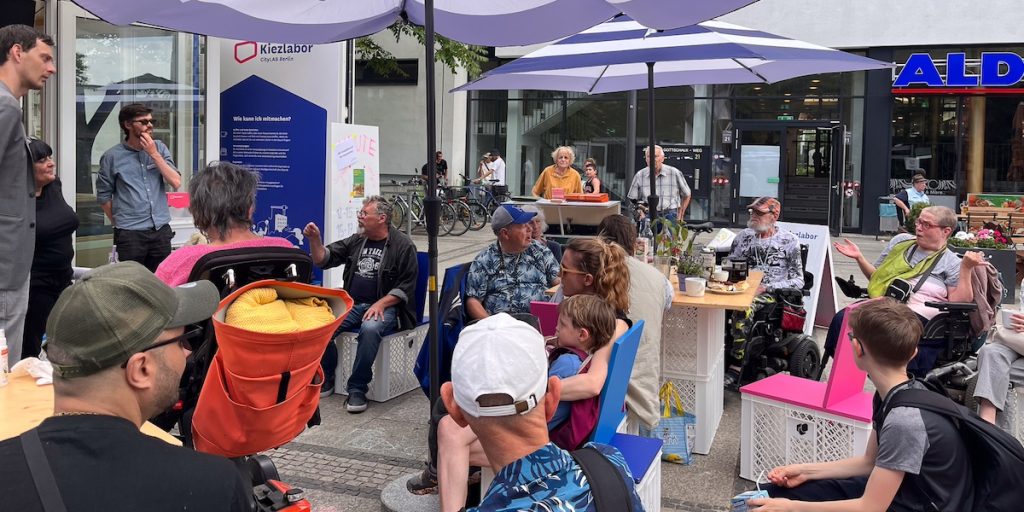
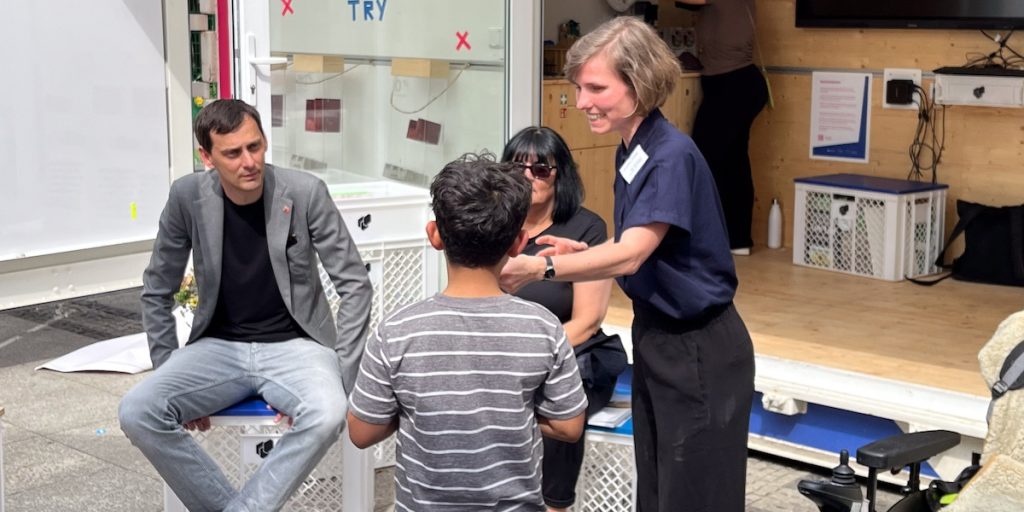
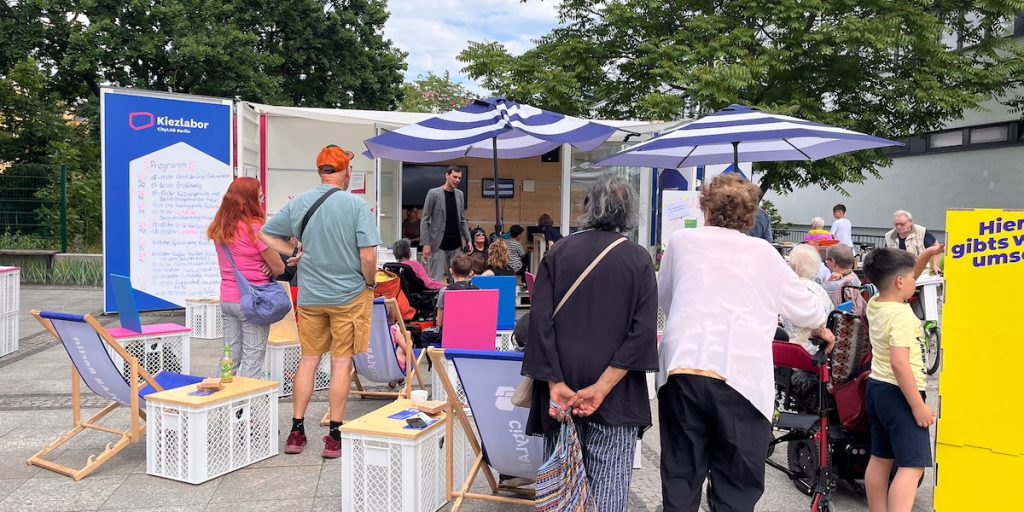
Discovery knows no age limits!
Our programme was as diverse as Gropiusstadt itself, and we made an effort to involve young and old – both to discover new things and to take a fresh look at the familiar!
This year, for the first time, 16-year-olds are allowed to vote in the European elections! The Neukölln Children’s and Youth Office’s campaign stand provided playful information about the U16 vote and the European elections in general. Young people also had the opportunity to cast their vote on the spot. Young people were also able to actively participate in the Mitmach-Laden, a district contact point for participation in Neukölln, and design their own open space in the neighbourhood, the Gropi Park, themselves. A construction week with the young people will start in July under the guidance of the Bauhaus-Archiv and the Gropiusstadt neighbourhood coordination office, where young people can implement the previously submitted ideas for the redesign themselves. The Kiezlabor has already been busy voting on which proposals are best received. Lukas Schulte, from Mitmach-Laden, was even more mobile than the Kiezlabor, as his information stand was attached to a bicycle. Schulte explained that their aim was not only to inform and listen to people, but above all to be a mediator between the residents of Neukölln and local politics. Schulte added that people’s main complaints were the limited green spaces in the area and the negative media coverage of their neighbourhood. He was therefore particularly pleased about a recently opened park in the neighbourhood, which has been made more barrier-free and environmentally friendly.
It was always a pleasure for our team to observe encounters between young and old. For example, while a child at the U16 voting stand interacted and asked out loud what “EU” actually meant, a senior citizen present explained it so impressively that a small group of listeners immediately formed around her.
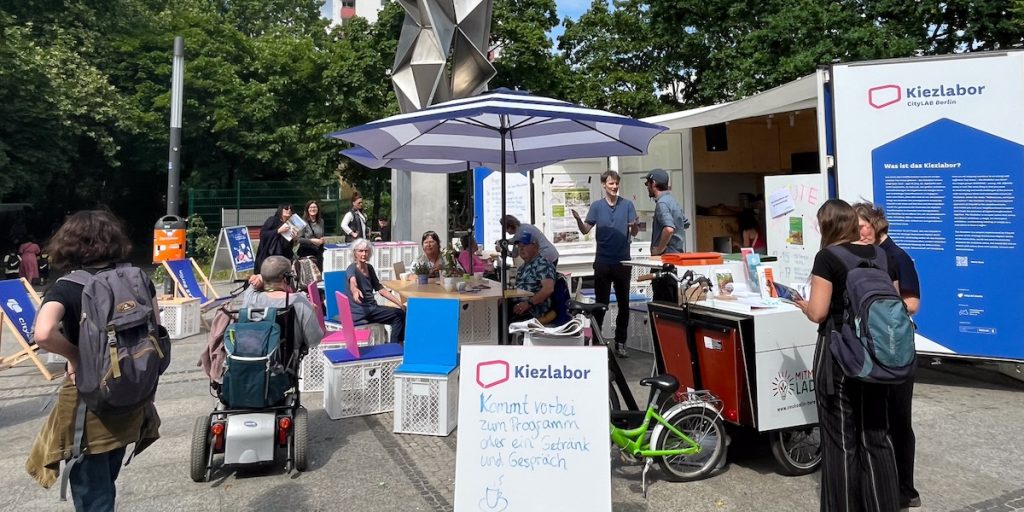

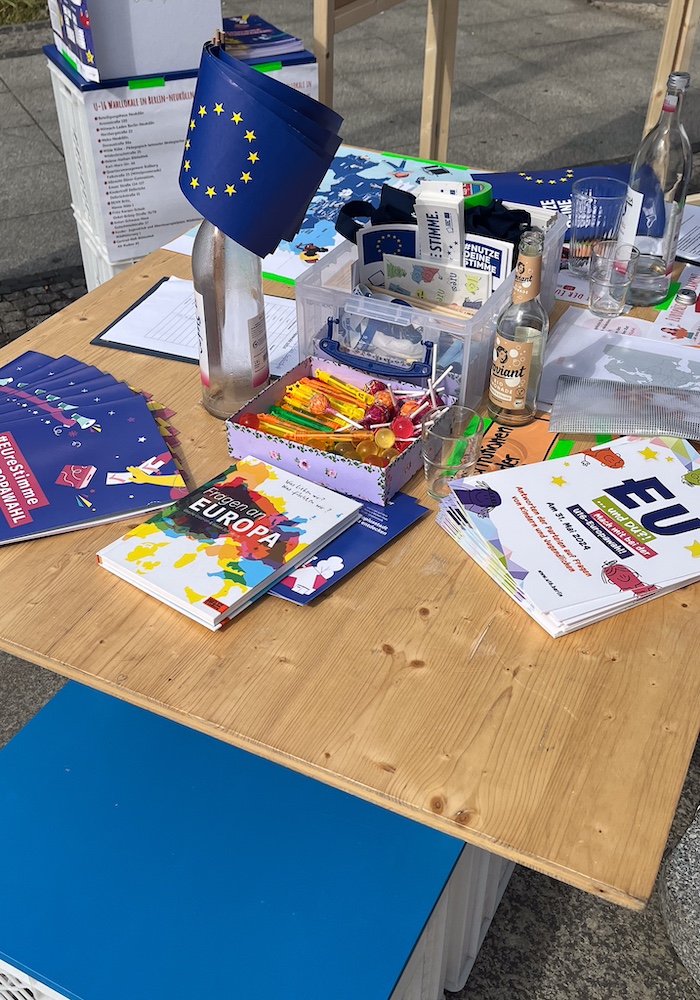
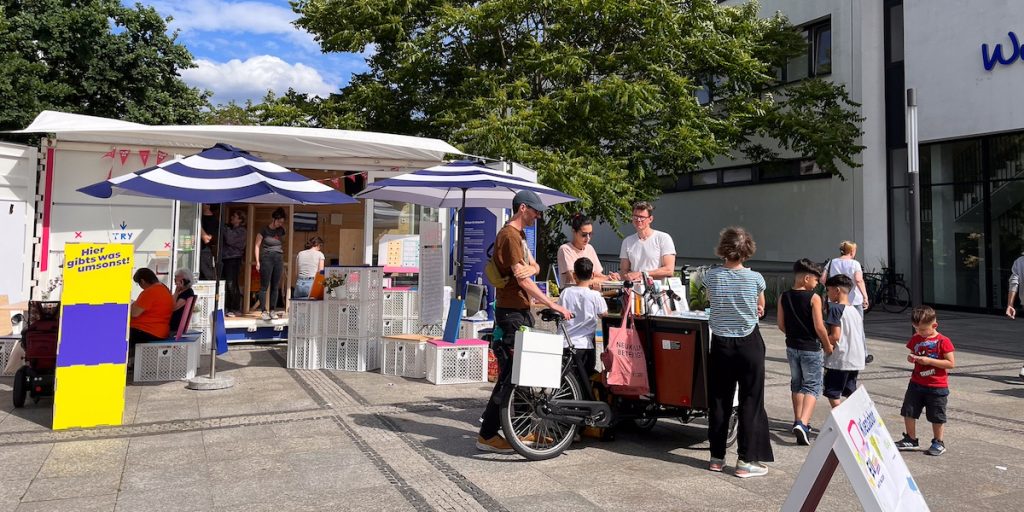
There was also coffee and cake in the Kiezlabor once again, as the Seniorennetz was on site to present its services. Practical exercises were carried out on senior-friendly tablets and the Seniorennetz online platform, which displays all leisure activities, events and places especially for older people, was explored together. Melanie Thoma from Seniorennetz was enthusiastic about the dialogue and the opportunity to respond to people individually – for her, it was unexpectedly one of the best meet-ups. Erwin Bender, Chairman of the State Senior Citizens’ Advisory Council, was also surprised at how informal and euphoric it was for people to come together and reported interesting conversations – both with the local activists and with the senior citizens. This is how the Kiezlabor combines virtual and analogue journeys of discovery!
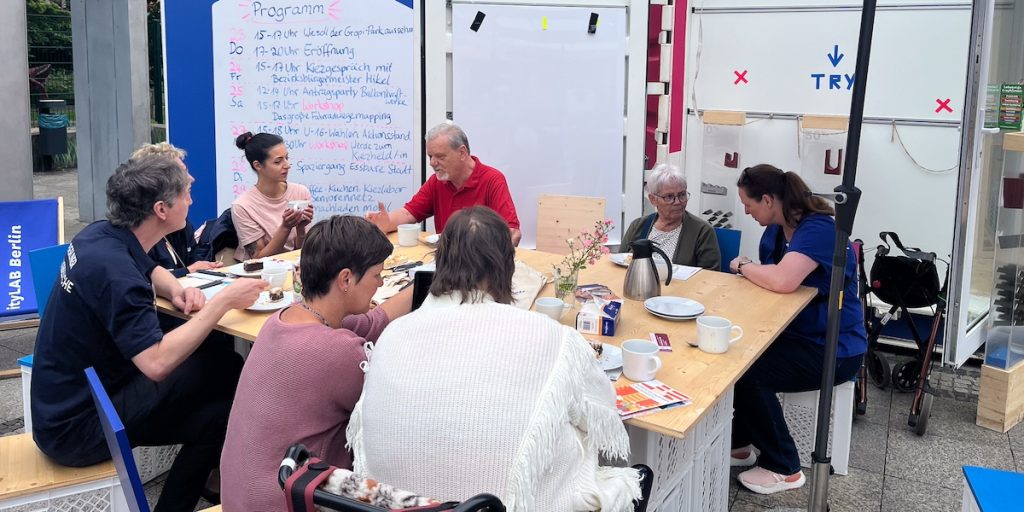

Exploring the neighbourhood: a Kiezlabor for tasting, hearing and feeling
A curious spirit of discovery always finds particular joy in exploring nature – and so does the Kiezlabor! Together with nature coach Simka and a group of visitors, we took a spring walk through the neighbourhood and found a delicious selection of familiar and beginner-friendly herbs and flowers, which were then prepared and eaten directly in the Kiezlabor.
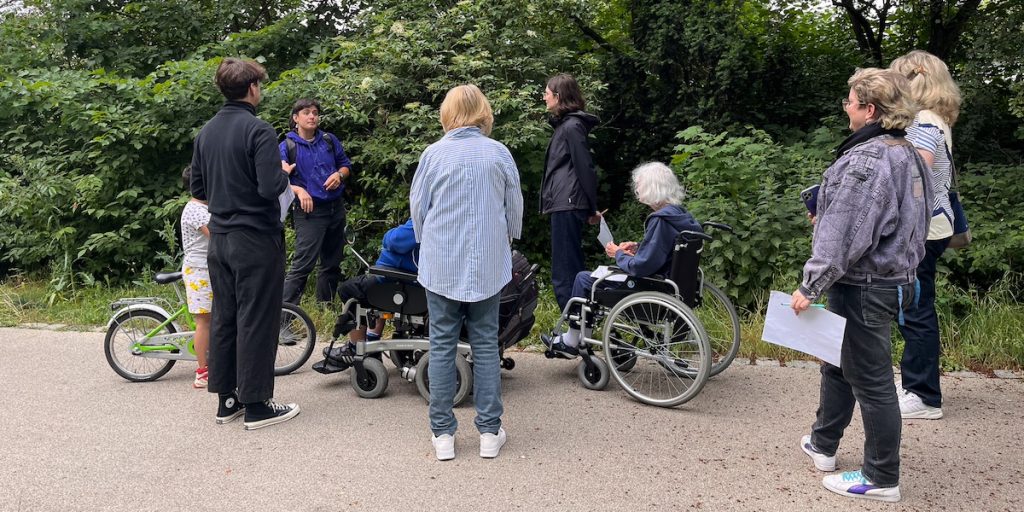
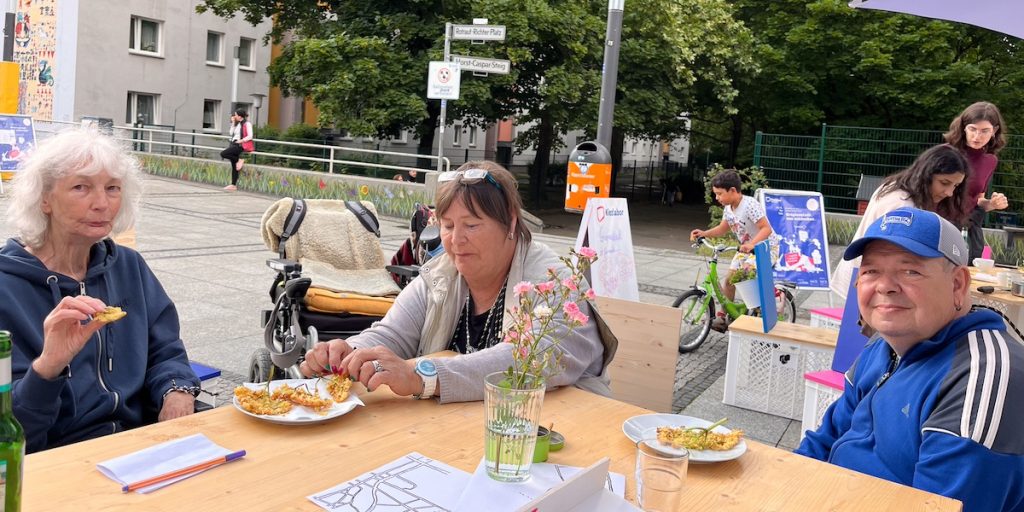
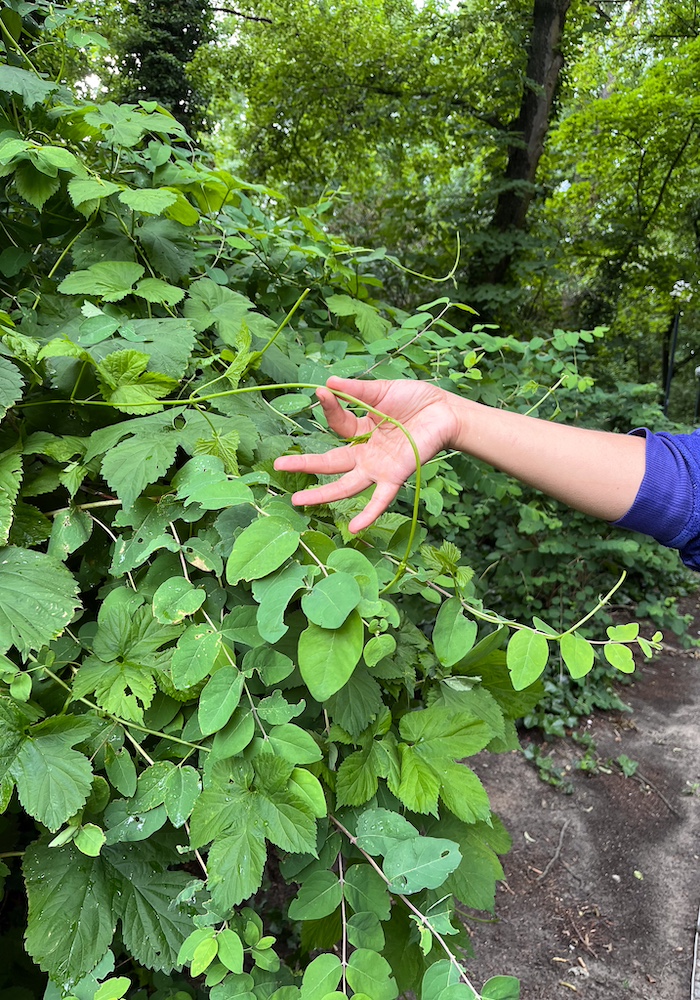
Issues such as food waste and food sharing are also very close to our hearts. The “Berlin nutrition coaches” from RESTLOS GLÜCKLICH e. V. inspired people to save food. In addition to information stands and an interactive discovery programme, there were also delicious zero-waste snacks and rescued food for visitors to take away.
Matthias Krebs, head of the “Lebendige Gropiusstadt” project, which focuses on food sharing, repair cafés and urban gardening, provided information about the various locations in the neighbourhood where fridges are located and people have the opportunity to hand in or take away food. “We want to pick people up locally and introduce them to the idea of food sharing step by step,” says Krebs in conversation. “So far, we have one fridge in the Waschhaus café – but a second and third fridge are already planned. This will create a real food sharing network in Gropiusstadt, unconditional and expectation-free!”
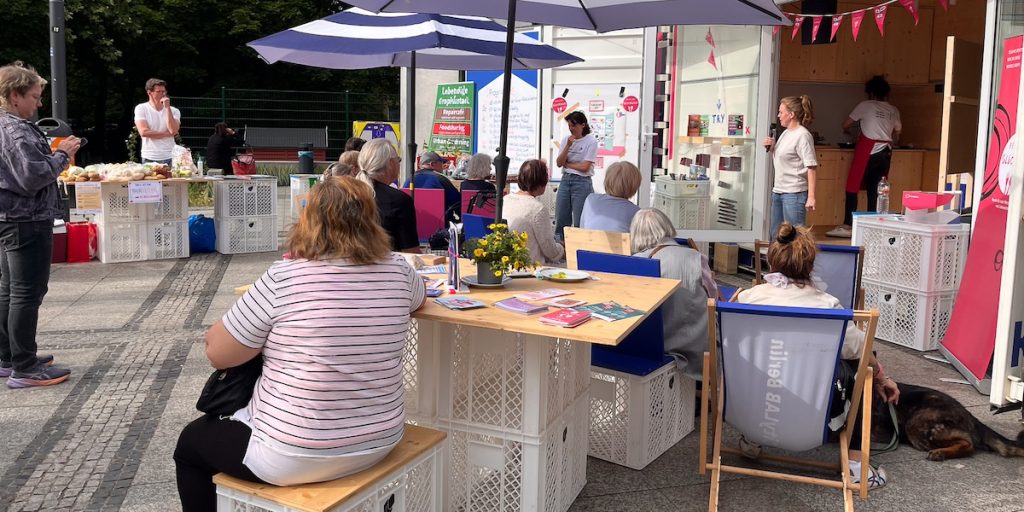
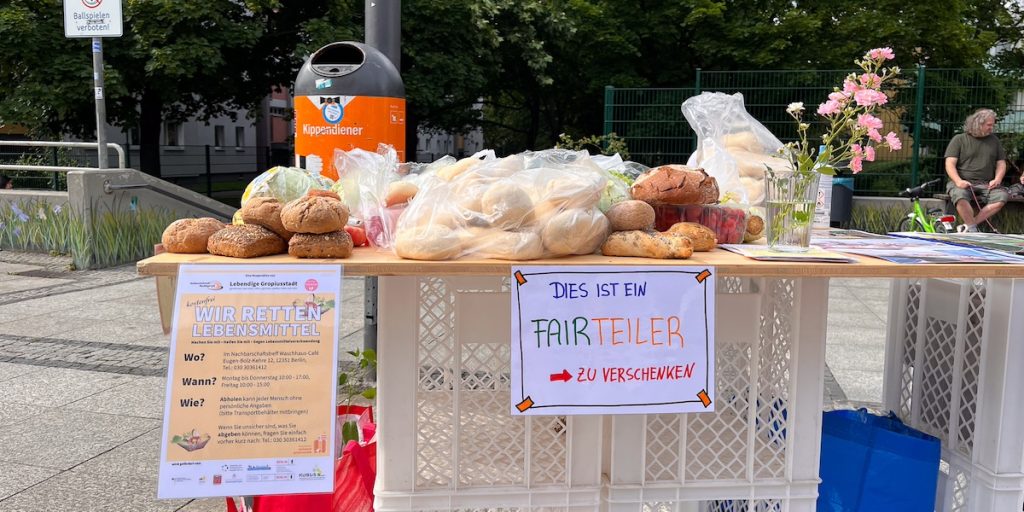
Of course, real explorers are not only active during the day, as there is also plenty to discover in Gropiusstadt in the evening. Together with British artist Jeremy Knowles, the visitors took a soundwalk through the neighbourhood on the subject of light pollution. The story was told from the perspective of Motten, who told the audience about her nocturnal experiences around streetlights in Berlin. The spirit of discovery could hardly have been greater, and visitors were also familiarised with the topics of light pollution and urban ecology in a fun way. Of course, there were snacks again at the end – but they had nothing to do with moths!
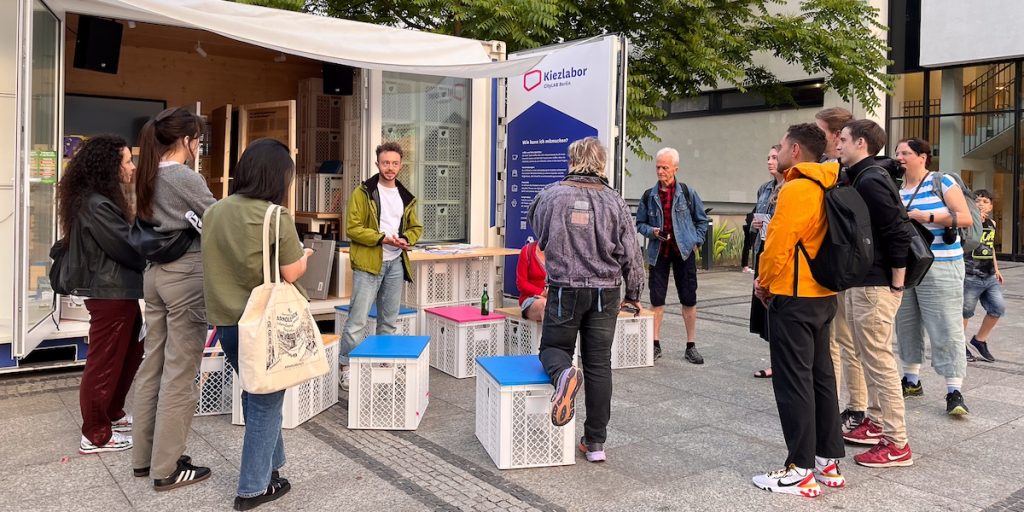
A difficult farewell
Even the best voyage of discovery has to come to an end, because the Kiezlabor has to move on to the next location with the knowledge it has gathered!
However, it is very important that everyone comes together again at the end for a grand finale! DEGEWO hosted the “Long Table”, where, in addition to all kinds of delicacies, there were also opportunities to apply for a balcony solar panel, a workshop on the quality of the soil and sports activities for the neighbourhood!
This long table showed us what Gropiusstadt is all about. On our journey of discovery, we were able to meet many curious and inquisitive people who are actively working with local associations and initiatives to create a more colourful neighbourhood. Thank you very much for this great experience!
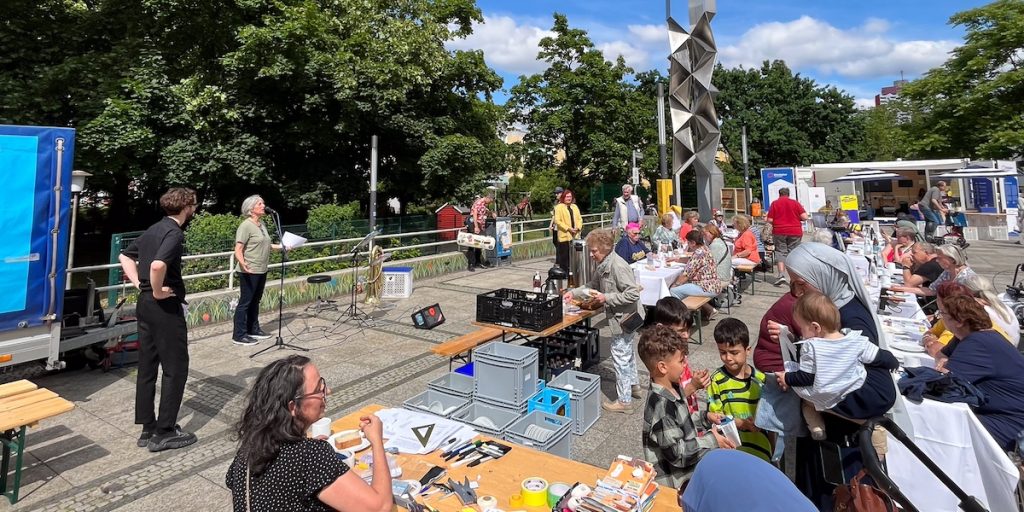
Have you got the urge to experience the Kiezlabor live? Then you’ll find us from 3rd – 14th June on the HTW campus in Lichtenberg, where there’s lots to discover again, we promise!
